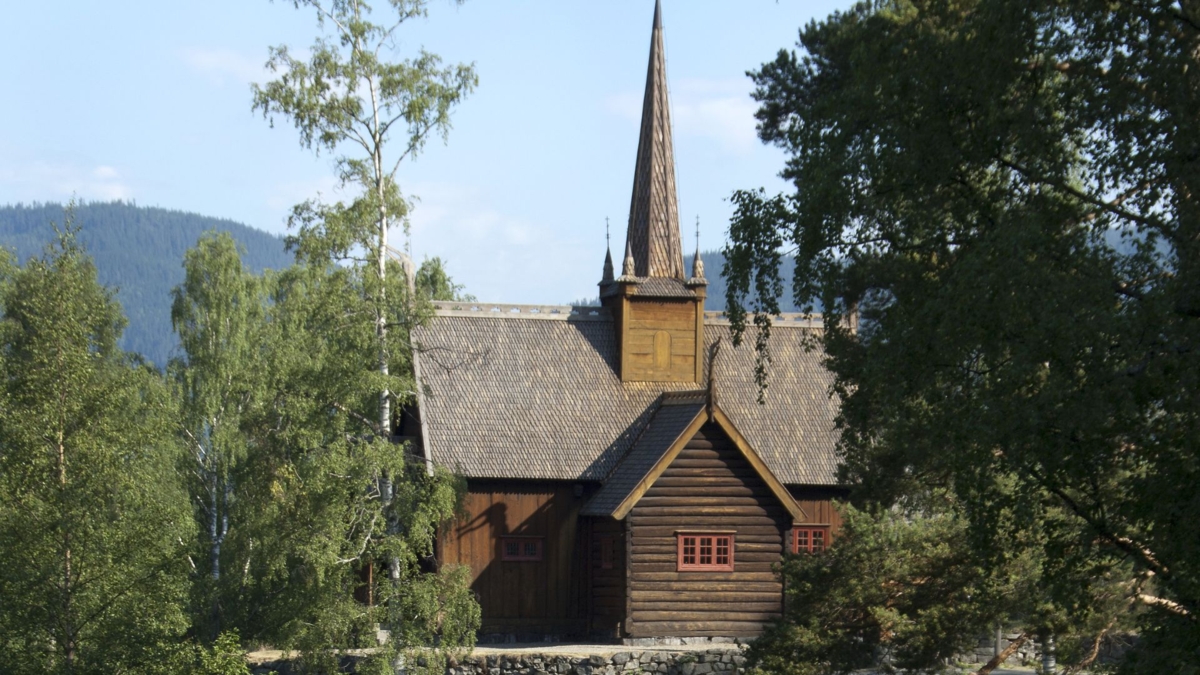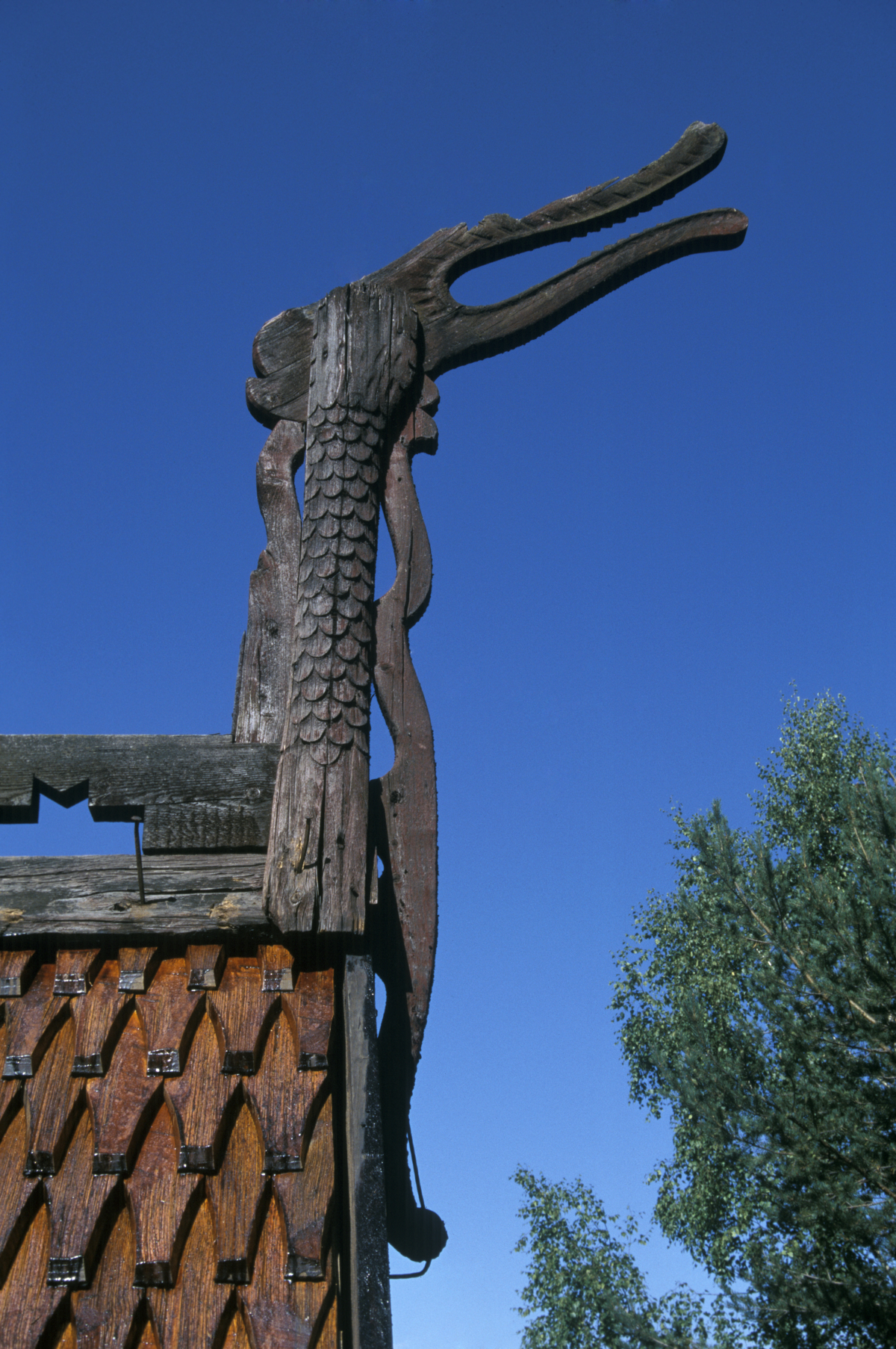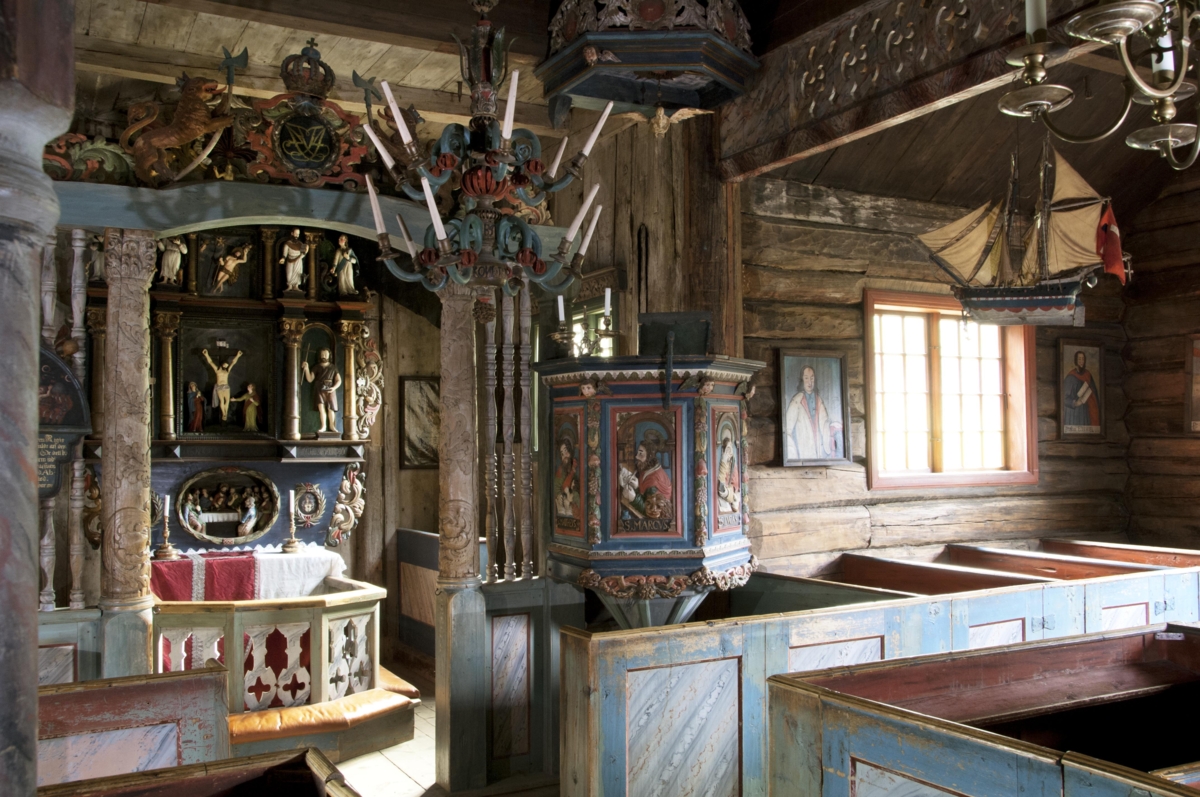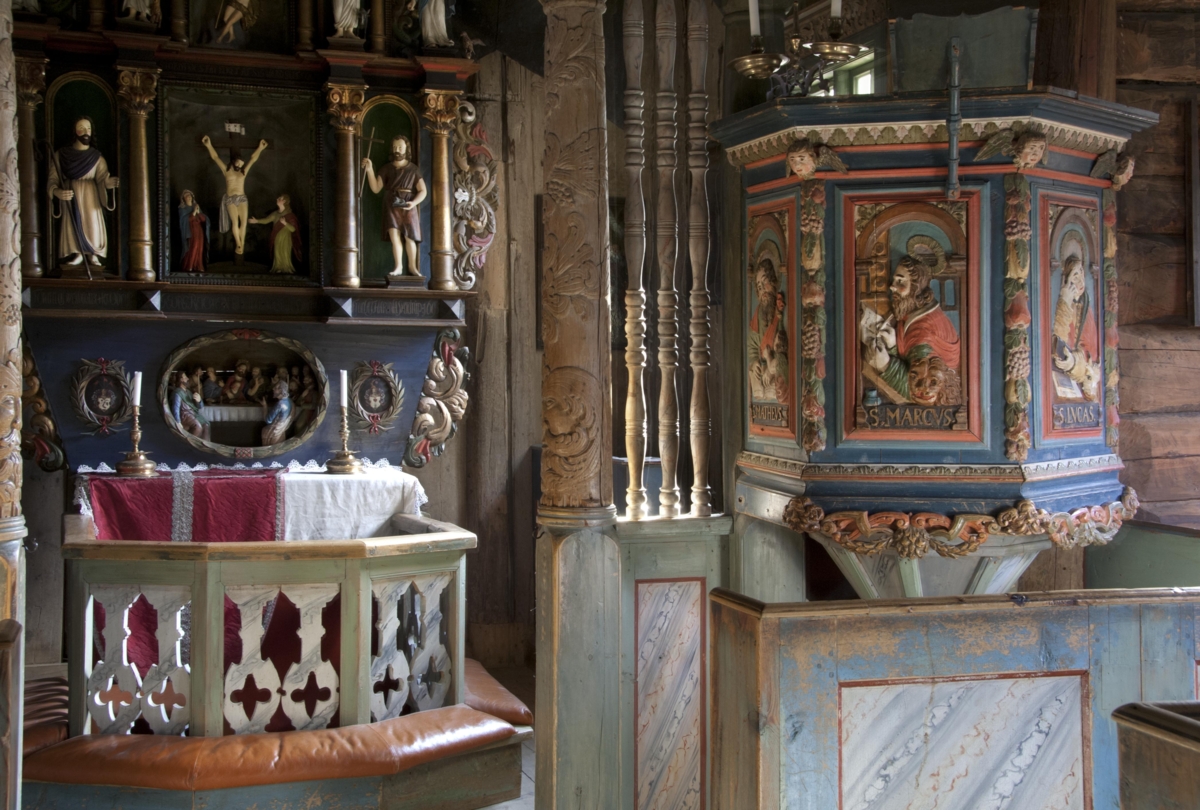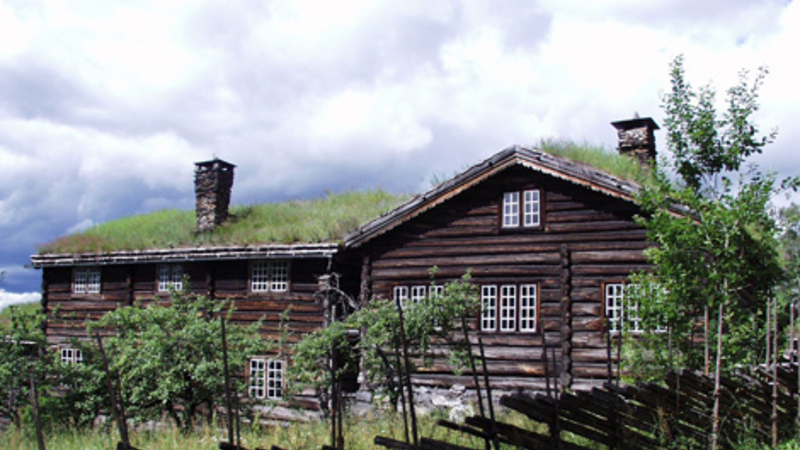
Photo: Tone Iren Eggen Tømte/Maihaugen
Garmo Stave Church
A Medieval church from Gudbrandsdalen
Garmo stave church stands proudly on the hill at the entrance to the Maihaugen open-air museum. With its pointed tower and dragon heads on the ridges, it is one of the museum's most striking buildings. The church was built in the early 1200s and was expanded several times, most recently in 1730, when it acquired its current cruciform shape.
Originally, the church stood in Garmo, Lom, but it was dismantled in 1880. The materials were preserved, and the church was reconstructed at Maihaugen in 1921. Today, it stands as the parish church of the village, providing an authentic glimpse into what a 1700s church in Gudbrandsdalen looked like. The church carries with it a history from the Middle Ages to the present day.
The church's historic furnishings
The church still contains its original furnishings, such as the altarpiece and pulpit, which conveyed religious messages to the congregation through their symbols and motifs. The baptismal font, which remains in the choir, was used during the baptism of the later Nobel Prize winner Knut Hamsun in 1859.
Garmo stave church has been at the center of life's major events, such as baptisms and weddings, and through its services, the Christian faith has been passed down from generation to generation. The church also served as the village's social gathering point before shops and meeting halls existed.
Modern use and stave church construction techniques
Today, Garmo stave church is used for church services during the summer months, and it is not uncommon to meet a newlywed couple here on a Saturday.
A stave church is constructed using a technique called "stav," which consists of a framework with vertical posts, known as "staves," in the corners. These staves form the structure of the church, and the walls are filled with vertical planks. Garmo stave church has also preserved small round openings high on the walls in the choir, typical of medieval stave churches.

